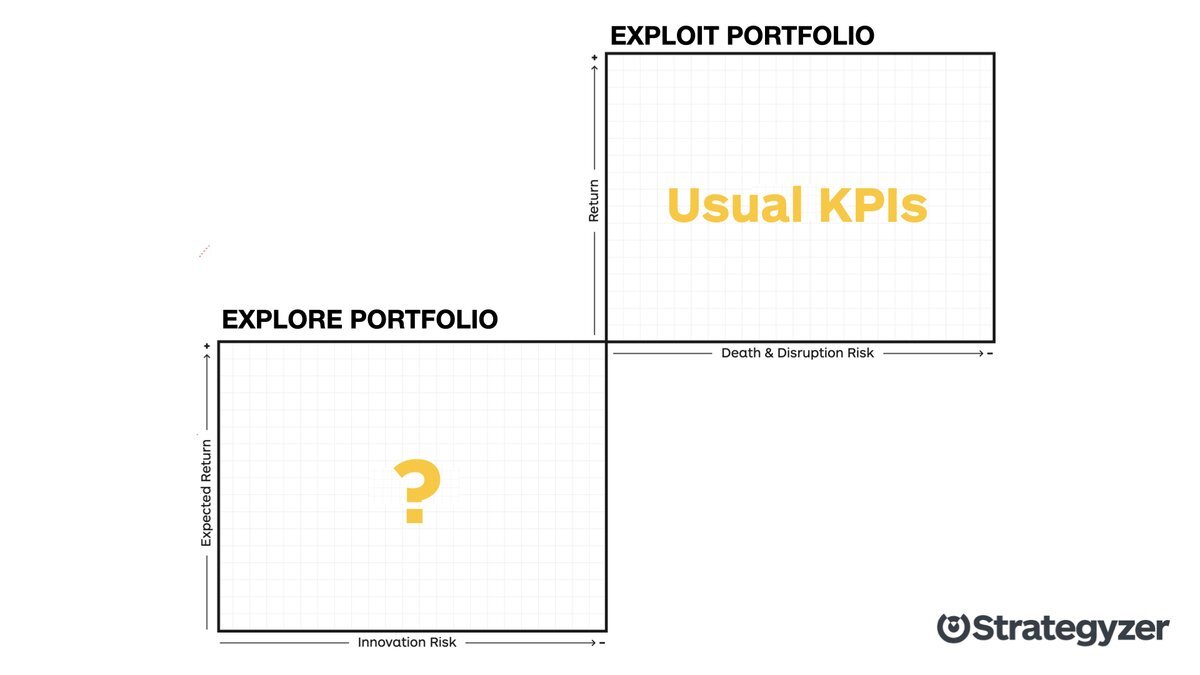How to take The Guesswork Out of Innovation
Photo by Miguel A. Amutio on Unsplash
To manage an innovation portfolio and make the right investment decisions, you need metrics to measure progress of projects in your portfolio. But many organisations we work with fall into the trap of using execution metrics on innovation projects. We believe innovation needs its own metrics.
In innovation, the main task is not to measure if you are on time and on budget, which are key metrics in an execution project. In innovation and exploration, it is crucial to measure whether you are reducing the risk and uncertainty of new business ideas before you invest big and scale.
Organisations that manage an innovation portfolio have to make investment decisions on a regular basis. When decision-makers base those decisions on intuition only, they might end up investing in ideas with no validated potential. Some innovation teams are masters of the pitch, wrapping up their idea in smoke and mirrors, and hiding in plain sight that they have no evidence to back it up. We always advise decision-makers to use metrics to help with investment decisions. But not any metrics. We’ve seen decision-makers use execution metrics on innovation projects, and this often leads to killing the wrong ideas. For example, when a team is not able to produce a convincing ROI (Return On Investment) in the discovery stage of their innovation project.
Using Strategyzer Innovation Metrics maximises the chances of making the right investment decisions in your portfolio.
That requires you to only track four metrics on every exploration project:
1. RISK, and uncertainty
2. POTENTIAL, and expected profitability
3. TIME spent
4. COST
The RISK metric clarifies how much the team has de-risked an idea so far, and how much risk still remains.
The POTENTIAL metric clarifies how big the idea could be in financial terms.
The TIME metric clarifies how much time the team has spent on the project so far.
The COST metric clarifies how much has been spent so far to test this business idea.
Let’s zoom in on how we calculate the RISK metric by measuring risk and uncertainty at three different levels.
Hypothesis Level
By breaking down an idea into smaller chunks you can understand and test risks at a more granular level. We call these the hypotheses underlying your idea. In other words, the most important things that need to be true for your idea to work. Each hypothesis is related to either the desirability, feasibility, variability or adaptability of your idea. If you don’t have recent evidence to support or refute a hypothesis, you need to run experiments to test the hypothesis so as to reduce risk and uncertainty.
Business Model Level
At the business model level, you look at the aggregation of all the important desirability, feasibility, viability and adaptability hypotheses underlying your idea. The more unproven hypotheses you have, the riskier your idea. To de-risk an idea you need to test the most important hypotheses until you are confident that the idea could work. We use the Assumptions Map to determine which of your hypotheses are the riskiest and most important.
Portfolio Level
The portfolio level shows the aggregation of the potential and risk of all your ideas. On the Portfolio Map you visualize all the ideas you currently have and how much you’ve de-risked each one so far. You also look at the financial potential of each one. This allows you to see which of your innovation projects is closest to success.
Once in place, innovation metrics help leaders manage an innovation portfolio in a systematic way, and decide based on evidence which projects to continue funding, and which projects to retire.
You can find this tool and many others in our latest book The Invincible Company
Note: an earlier version of this post was originally published on the Strategyzer blog





